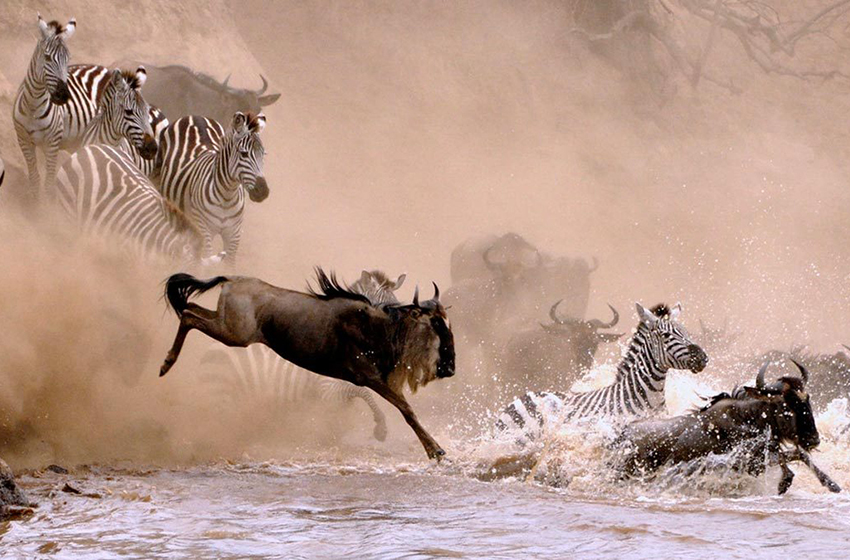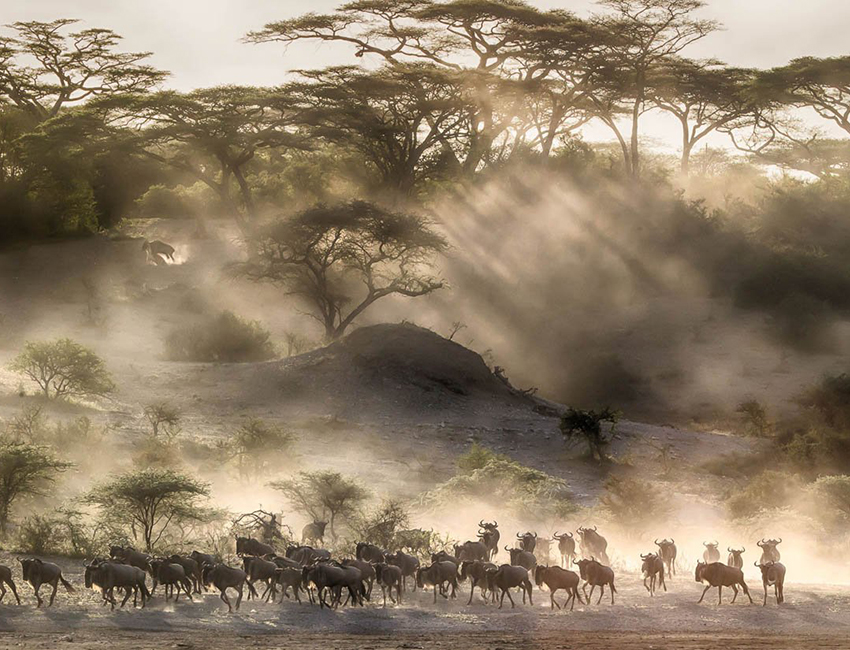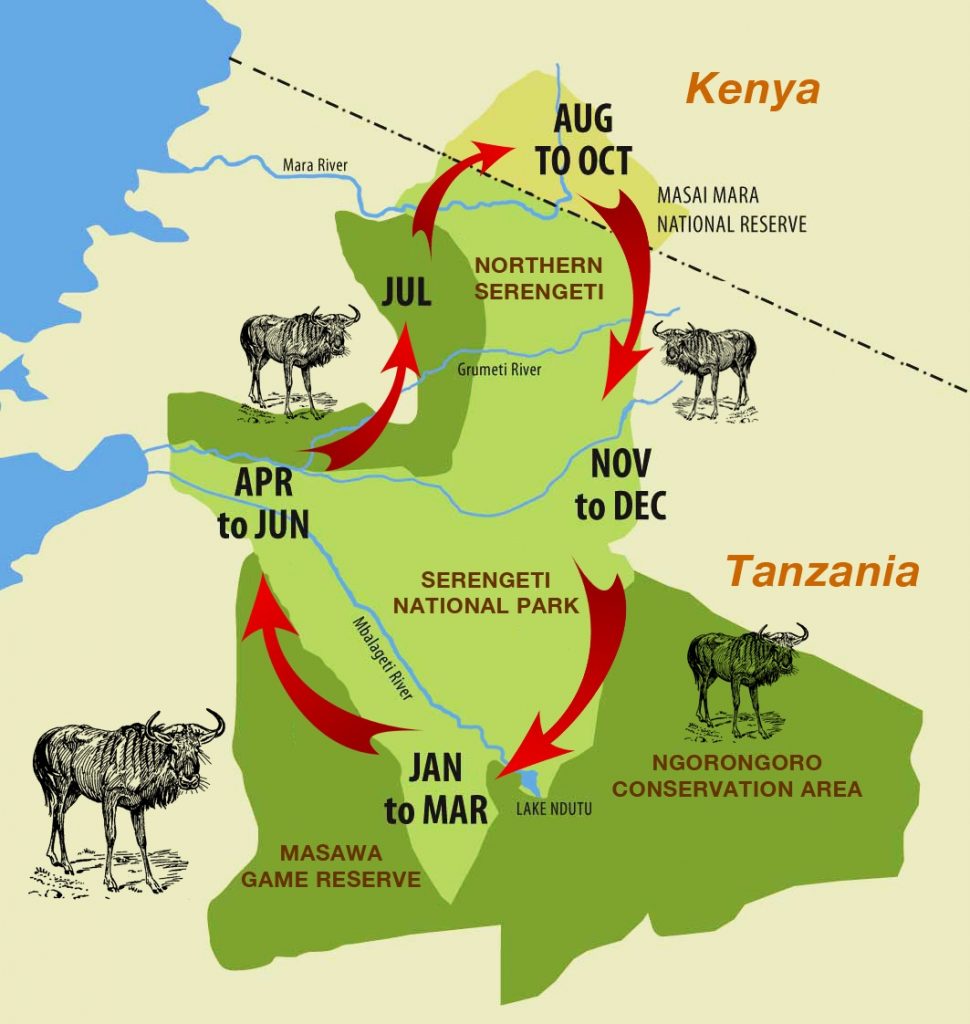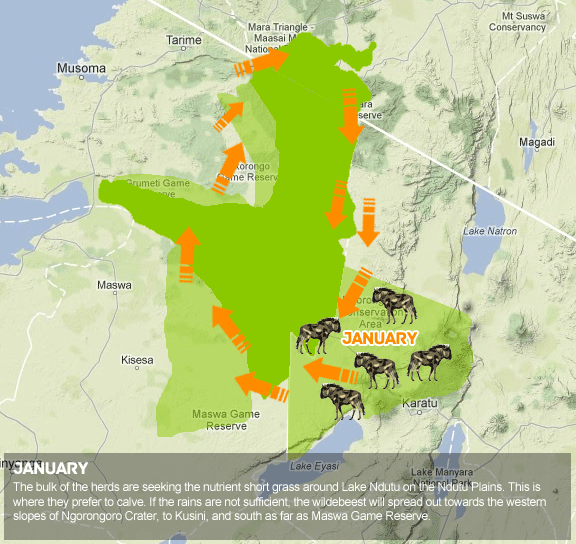Wildebeest Migration
Wildebeest Migration
What is the Great Wildebeest Migration?
Each year, almost two million wildebeest and 20 000 plains game migrate from Tanzania’s Serengeti to the south of Kenya’s Masai Mara in search of lush grazing grounds and life-giving water. This treacherous migration is dictated by the seasons and where the rains are, the wildebeest are not far behind. This epic journey from north to south spans almost 3000 kilometres and is virtually endless.
Wildebeest Migration
Rather than having a start or end point, the Great Migration moves rhythmically in a clockwise direction, making herd tracking unpredictable. It is for this reason that our Herdtracker app was created; to help you track the wildebeests’ movements and plan the safari of a lifetime. Choose from our existing safari packages or tailor-make your own journey according to your budget.
The Great Wildebeest Migration – the annual migration of giant herds of grazers across Northern Tanzania and Kenya is a truly spectacular event. Over two million wildebeest, zebras and gazelles move through the Serengeti and Masai Mara ecosystems in search of green pasture, in a regular pattern. This is surely one of the greatest wonders of the natural world.

Great Migration Safari Holidays
- The Great Wildebeest Migration is rarely in the Masai Mara Kenya; the herds only ever venture there as an extension of their grazing lands in the northern point of Tanzania if they need to for fresh pastures.
- You can only find the migration in Kenya within a few months of the year when they head towards the border, and even then, most of the herds are still mulling around the northern parts of the Serengeti anyway…
How best to see wildebeest Migration?
When and where to see wildebeest migration?
- December to June – The wildebeest are in the Serengeti National Reserve in Tanzania.
- July – The migration is on the move from the Serengeti to the Masai Mara National Reserve of Kenya.
- August to October – The migration is in the Masai Mara.
- November – The migration moves from the Mara to the Serengeti
Wildebeest facts: Why does the Great Migration occur & why do the Wildebeest Migrate?
Wildebeest typically inhabit the Serengeti plains of southeastern Africa. For most of their lives, wildebeest graze in the grassy savannas and open woodlands of the plains, which straddle the nations of Tanzania and Kenya.
The wildebeest migrate around the Serengeti, and into the Masai Mara for the sole purpose of following the rainfall. For their calving from December – March they always begin their cycle in the Southern Serengeti area of Ndutu and follow wherever the grass is greener.
Whilst we have a good idea of where the wildebeest should be at any given time of year, it really does depend on where the rain falls.
The wildebeest are notoriously unreliable, as although they generally all head from south to north Serengeti. Again, they often zig-zag along the way, making it sometimes impossible to predict where the big herds will be at any given time.

What and why the wildebeest Migration?
250,000 animals perish on the way. Some scientists believe that the wildebeest are motivated by the chemistry of the grass in so much as the herds are attracted to higher levels of phosphorus and nitrogen, which changes in response to the rains.
Nor is the migration one single big herd, but many smaller herds – sometimes compact, sometimes scattered. And to complicate matters further – the Mara has its own sedentary herds of wildebeest, some of which migrate within the Mara itself as part of the increasingly famous Loita Migration.
So whenever you visit Kenya, you’ll see the wildebeest – you might catch them during the birthing period, you might catch them on the move. Or you might catch them as they cross the Mara River sometime between August and October. But whenever you see them, and wherever you see them, it will be worth it.

